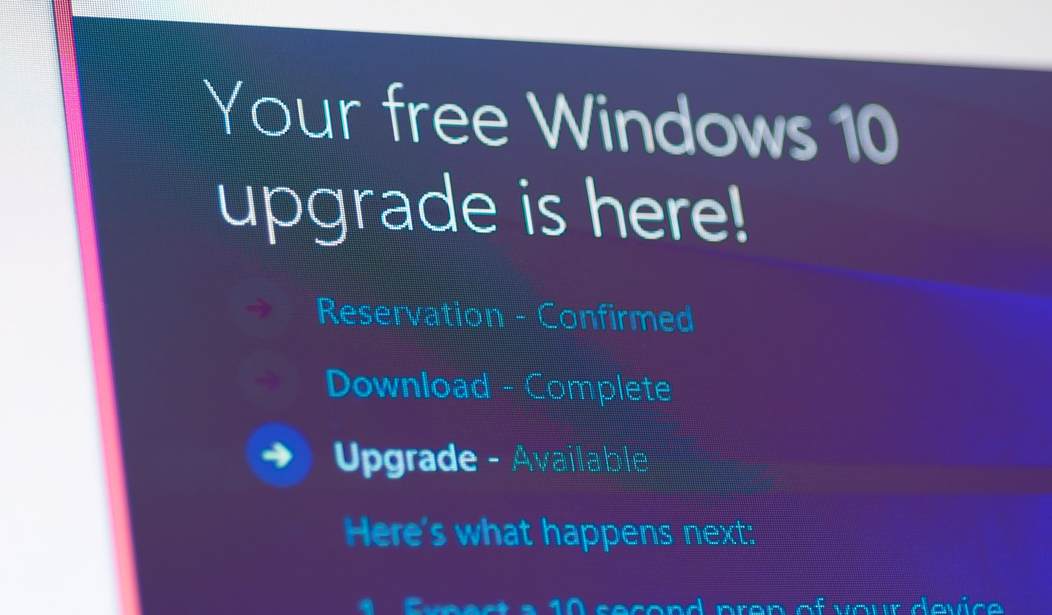Do you know how to protect your computer against Microsoft’s stealth upgrade process to Windows 10? I’ll get to that in greater detail shortly, but one California woman didn’t, but her frustration turned into a $10,000 payday:
Teri Goldstein of Sausalito, California, said a few days after Microsoft released Windows 10 publicly in July 2015, the computer at her travel agency business tried to download it without her consent. The update failed and her computer “slowed to a crawl,” crashing at times and becoming “unusable for days at a time.”
“I had never heard of Windows 10,” Goldstein said. “Nobody ever asked me if I wanted to update.”
Goldstein attempted to reach Microsoft’s customer support department to fix the problem, but that apparently didn’t work, so she decided to take Microsoft to court. She sought compensation for lost wages and to cover the cost of a new computer.
As it would happen, Goldstein won the case, earning a $10,000 judgement, after Microsoft decided not to appeal. A Microsoft representative said the company didn’t want to take the legal battle any further to “avoid the expense of further litigation,” according to The Times.
Microsoft denied any wrongdoing.
Microsoft was so, so wrong — and that’s why they settled the suit so quickly. Personally, I don’t have any strong feelings about Windows 10 one way or the other. I switched to Mac ten years ago after Redmond pushed back a WinXP upgrade once again, and Apple finally switched to Intel chips. And I reserve the right to switch platforms yet again (Hello, Linux!) if and when Apple ever loses its way. But I am so, so against anyone taking over my computer for their purposes.
With that in mind, here’s more about that “stealth upgrade” thing I mentioned in the lede…
Redmond is so desperate to get people onto the Windows 10 platform that the company is breaking its own established interface rules to trick people into making the switch. It’s so bad that even Windows-friendly Computerworld magazine published a piece called “How Windows 10 became malware.”
Read:
If software from any other company behaved the way the Windows 10 upgrade does, would it be considered malware?
To find out, I delved into how the controversial upgrade works. Microsoft has been aggressive in its attempts to get as many people as possible to upgrade to Windows 10 in advance of the company’s self-imposed July 29 deadline for free upgrades from Windows 7 and Windows 8.1.
Last year Microsoft installed its Get Windows 10 app on millions of Windows 7 and Windows 8.1 PCs. It alerted people that they could “reserve” the free upgrade if they wanted. When the app popped up on people’s PCs, they could close its window and block any action it might take in the time-honored way of clicking on the X in the upper right of the dialog box.
Since then Microsoft has gotten increasingly aggressive in getting people to upgrade to Windows 10. It began stealthily downloading the bits required for the upgrade to PCs automatically without telling people. And then this spring Microsoft sprung a trap. When the upgrade app appeared, if someone clicked the X in its dialog box in order to close it and cancel an upgrade, Windows did the exact opposite of what the person intended to do: It upgraded that person’s PC to Windows 10. Microsoft did that even though the app always behaved in the opposite way before then, which is pretty much the way any legitimate app behaves — closing a dialog box and canceling any actions.
Stealing gigabytes from your hard drive or SSD, tricking you into installing unwanted software…
Yeah, Windows 10 sounds an awful lot like malware, or at least the installer app does. And Microsoft seems to agree, quickly settling on a big cash award rather than risk having the case drawn out and being forced to admit to some kind wrongdoing.
So if you get that Windows 10 upgrade dialog and you don’t want it, remember not to click the X. And if you still manage to get tricked into an unwanted install, you might just have a nice payday in your near future.










Join the conversation as a VIP Member